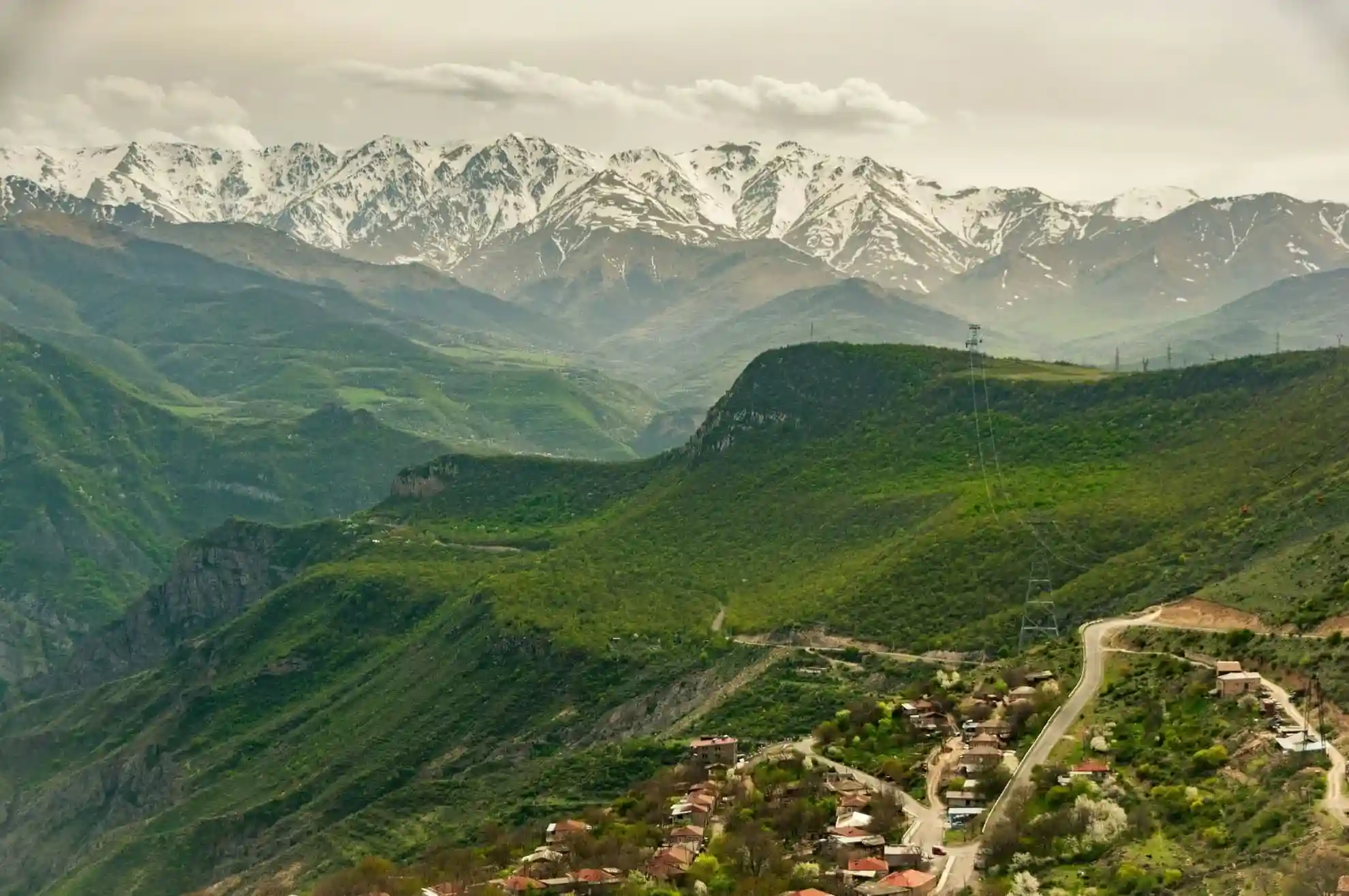
Armenia
Start Your Armenian Adventure Now!
Armenia: A Comprehensive Overview of Its History and Geographic Location
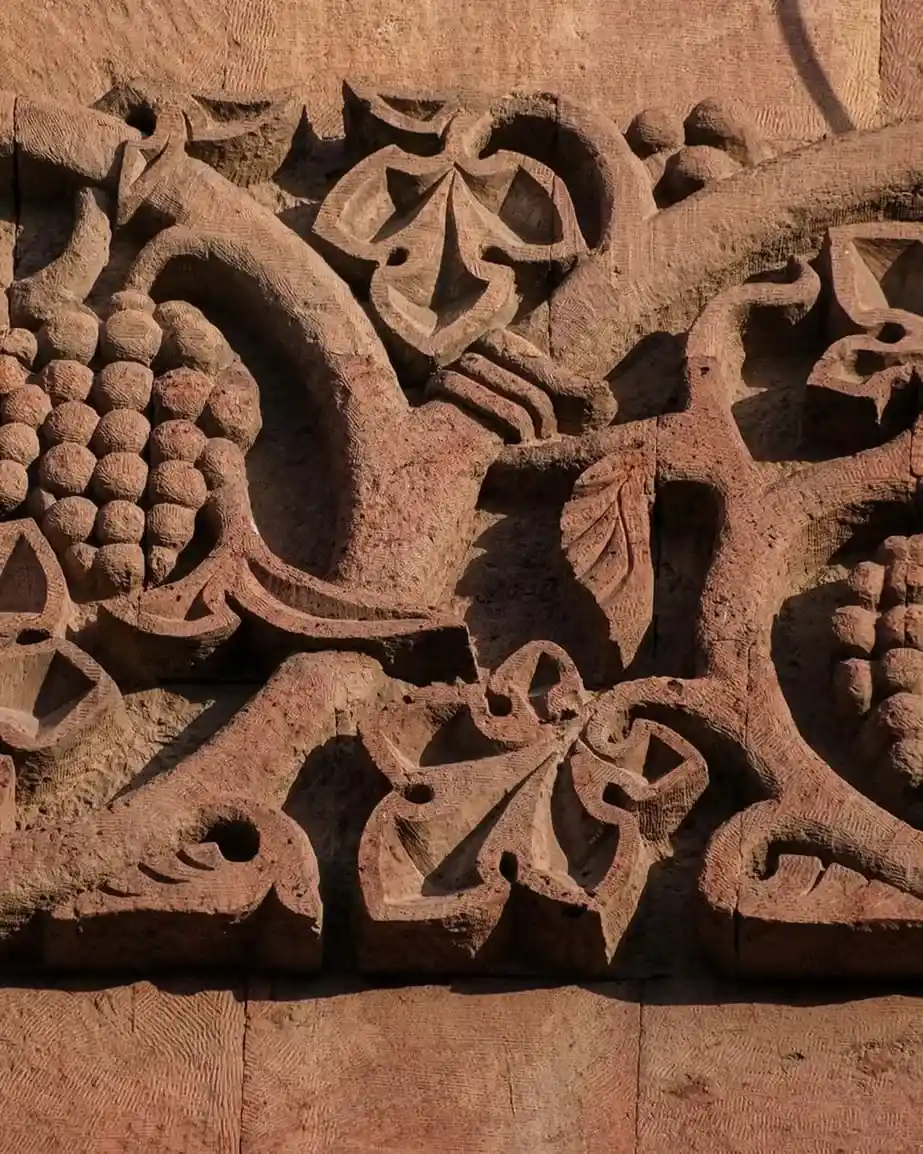
Armenia, one of the world's oldest inhabited countries with roots going back over 2,800 years, is renowned for its breathtaking landscapes. This includes the iconic view of Mount Ararat, one of the most symbolic natural landmarks adorned with snow. Additionally, Armenia is home to sites such as the Garni Temple, a UNESCO World Heritage site, and the Armenian Apostolic Church in Etchmiadzin.

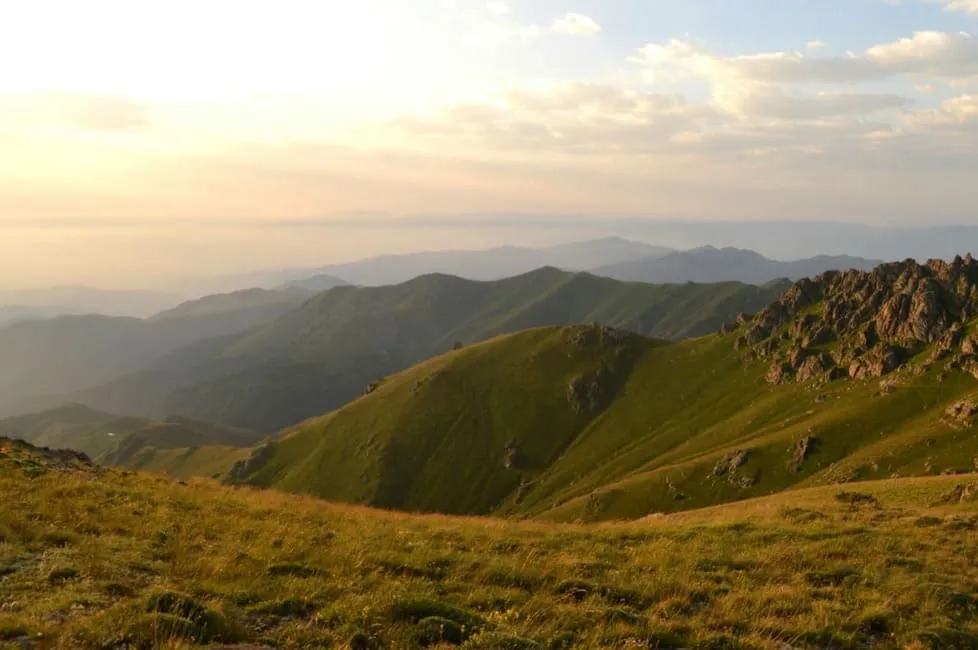
The country also includes numerous other mountain ranges, including the Lesser Caucasus and the Geghama Mountains, which offer stunning views and hiking trails. Armenia's forests are characterized by rich biodiversity, with a variety of rare plants and animals.
Dilijan National Park, known as the "Little Switzerland of Armenia," is a prime example of the country's natural beauty, featuring dense forests, sparkling streams, and tranquil lakes. The Dilijan National Park, often called Armenia's "Little Switzerland," showcases dense forests, sparkling streams, and tranquil lakes.
Armenian culture is distinguished by its heritage and arts, with a long history of literature, music, and visual arts. Armenian cuisine is renowned for its diversity and unique flavors, highlighting dishes such as kebabs, dolma, and grilled meats.
Overall, the aesthetics of Armenia, including its rugged mountains, lush forests, picturesque valleys, and tranquil lakes, attract visitors from around the world. This combination of diverse landscapes, along with its rich cultural and geological history, makes it a haven for nature lovers and outdoor enthusiasts alike.
Armenia is the perfect destination for skiing enthusiasts and other winter activities. Spring and autumn offer mild weather and stunning natural scenery, while summer showcases the country’s beauty and diversity with a splendid mix of ancient civilization and modern life. In the capital city, Yerevan, visitors will find a vibrant urban life, while other Armenian cities seamlessly blend tradition and modernity. From cultural landmarks to recreational spots, each city offers a unique experience.

Ready to travel? Get a free consultation and plan your perfect trip today!
Plan Your Trip Today

The Armenian People
The Armenian people have a rich history and a deep culture that reflects their diversity and evolution through the ages. Armenians are known for being hospitable and friendly, valuing family and traditions, and taking pride in their hard work and diligence.
They have a spirit of adventure and discovery and enjoy sharing their history and culture with Arab visitors.
Language
The official language is Armenian, which is a distinct branch of the Indo-European language family. The Armenian alphabet is radically different from the alphabets of other languages. Generally, signs in government buildings and public places also include Latin script. In addition to Armenian, Russian and English are widely used in the country.



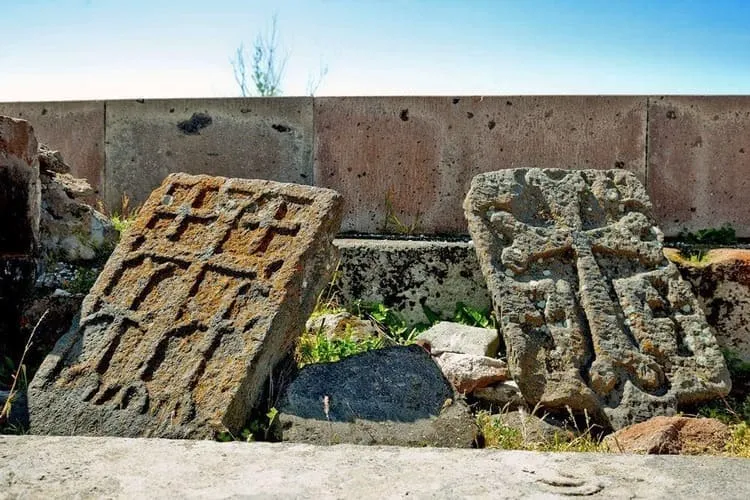
Religion
The official religion in Armenia is Christianity, which was adopted in 301 AD. Christianity is deeply rooted and strong in the country, with the majority of Armenians belonging to the Armenian Apostolic Orthodox Church. The head of the church is the Armenian Catholicos, who resides in the Holy Etchmiadzin.
The Armenian Apostolic Church is central to the country's cultural identity, with its teachings and traditions underpinning much of Armenian life and culture.
Geographical Information
Armenia is located in the South Caucasus region. It is bordered by Georgia to the north, Iran to the south, Azerbaijan to the northeast and southwest, and Turkey to the west.
The Republic of Armenia covers an area of 29,800 square kilometers, with an average elevation of 1,800 meters above sea level. The highest point is Mount Aragats (4,090 meters), while the lowest point is the Debed River Valley (400 meters).
The capital city is Yerevan. According to the 2024 census, Armenia has a population of three million people, with one million and one hundred thousand of them living in Yerevan.


Armenian Currency
The Armenian national currency is the Dram, with the AMD currency code, put into circulation in 1993. The currency consists of banknotes of 1,000, 2,000, 5,000, 10,000, 20,000, 50,000, and 100,000 dram, while the coins denote values of 10, 20, 50, 100, 200, and 500 dram.
It is easy to exchange foreign currency at banks and currency exchange offices throughout the city.
Armenian Food
Armenian cuisine is famous for its strong flavors, fresh ingredients, and century-old traditions. One of the most beloved dishes is khorovats (Armenian barbecue), which typically consists of marinated meats grilled over an open flame, No Armenian celebratory table can be imagined without the most favorite barbecue, harisa, spas, dolma, khashlama, ghapama and of course Lavash, the thin flatbread baked in clay ovens called "tonirs," is a staple of Armenian tables and is even recognized by UNESCO as part of Armenia's cultural heritage.

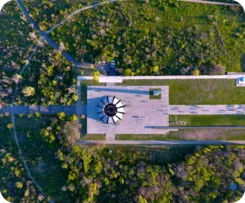
Armenian Genocide
The Armenian Genocide occurred between 1915 and 1923, with the atrocity perpetrated through an organized campaign that went on to claim approximately 1.5 million Armenian lives in the Ottoman Empire. Mass killings, forced deportations, and death marches via the Syrian Desert all made up the methods through which Armenians fell victim. Such methods brought the almost eradication of Armenian communities from their historic homeland. Historians and scholars alike consider it one of the first modern genocides. However, it is still highly politicized and, in some quarters, denied to this day.
The genocide continues into the contemporary era to inform Armenian identity, it's memorials and annual commemorations serve as a reminder of this bleak period in history.
Armenian Flag
The national flag of the Republic of Armenia consists of three colors, in stripes of equal width, red, blue, and orange accordingly from top to bottom. The Red denotes the Armenian Highland, the Armenian people's perennial fight for survival, their preservation of the Christian faith, their independence, and freedom.
The Blue denotes the will of the people of Armenia to live under a peaceful sky. The orange color symbolizes the creative talent and hard work of the Armenian people.

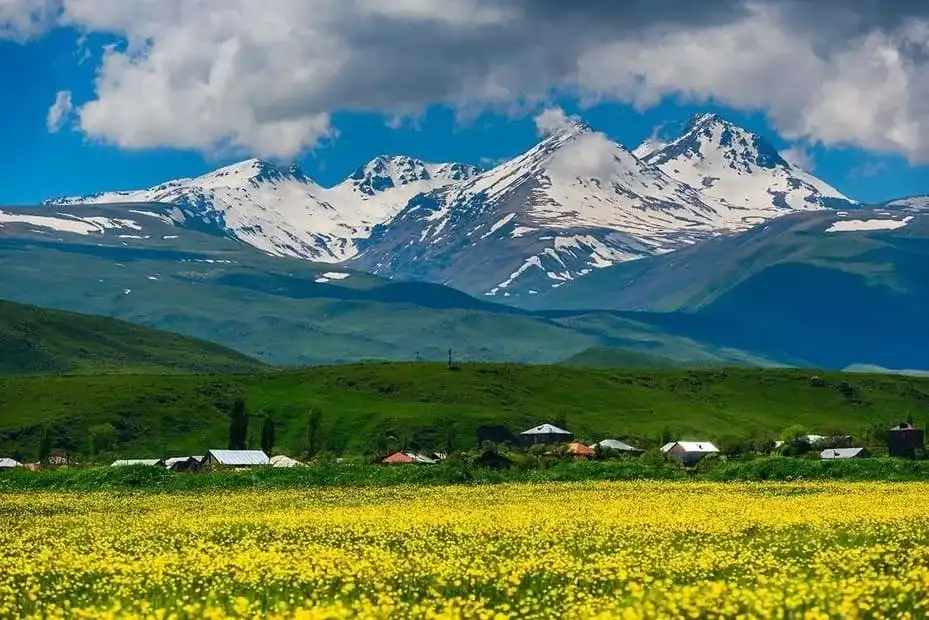
Armenian Weather
Whether you are a history addict, nature lover,
Armenia has a dry continental climate, with clear sunny days prevailing most of the year (over 300 days annually). Summers are hot, with temperatures ranging from +22°C to +36°C, while winters are generally cold and snowy, with temperatures ranging from -1°C to -15°C. The mountain peaks are covered with thick snow.

FREQUENTLY ASKED QUESTIONS:
The best currency to bring to Armenia is the American dollar or Euro, because it's easy to exchange everywhere such as banks and exchange offices in major cities. We highly recommend you wait until you reach Yerevan to change your money instead of exchanging it at the airport, since the rates are usually a bit low compared to the market, we can direct you to supermarkets like SAS, Parma, or CITY for a great rate. It would be a good idea to have cash on you, because, outside of Yerevan, many places are working with cash only and do not take cards. You'll find ATMs all over Yerevan and most other cities. You can take direct AMD (Armenian Dram) out; the rate is normally better if you exchange USD or Euro directly at local exchange places rather than withdrawing AMD (Armenian Dram) via an ATM. We recommend changing your money at a better rate in one of these supermarkets: SAS, Parma, or CITY.
There are a lot of currency exchange offices scattered around Yerevan,offering very good rates. Sometimes, even supermarkets like SAS, Parma, and CITY have better rates than the airport exchanges. You can also find ATMs in Yerevan and other cities, allowing you to withdraw directly in AMD. Note, however, that the rate of the ATM is somewhat less advantageous than cash exchanges. We also recommend having some cash in hand, since most places outside Yerevan will not be able to process a card payment.
Armenia has four distinct seasons. Winter December to February-is cold and snowy, great for skiing; Yerevan temperatures range from -5°C to 5°C. Spring March to May is mild and green; temperatures run from 10°C to 20°C. Summer June to August is hot, especially in Yerevan, where temperatures can reach 35°C to 40°C. The cooler mountain areas are perfect for hiking and such other open-air activities. In autumn, between September and November, the weather is cool, and the colors are brilliant; temperatures range between 15°C and 25°C. Each season has activities that make Armenia a year-round destination.
Armenians are very hospitable; every guest they meet is greeted with open warm hearts and hands. The family is the main core in Armenian culture, and respect for family relations is one of the most valued aspects. People are proud of their history and traditions, and for centuries, despite all the difficulties, the spirit of nation has been widely developed. Most Armenians are proud of their rich cultural background, arts, music, and foods. Besides, Armenians can be referred to as very resilient, who managed to stand against every misfortune that came their way while preserving their unique cultural and religious customs. There is a great sense of community, and Armenians really do form tight, supportive networks. They have a great sense of humor.
Cultural festivals are numerous in Armenia, allowing guests to witness its traditions. Between December 31 and January 6, the Armenian New Year and Christmas are celebrated with family reunions, traditional foods, and candlelight masses.
In the summer, the energizing Vardavar Water Festival invites people across Armenia to splash water on each other. Independence Day on September 21 fills the streets with parades and music. In May, Yerevan's Wine Days begin with wine tasting and celebrations. Food events such as the Dolma and Gata festivals unite gastronomic traditions with tastings and cooking competitions. These festivals allow Arab travelers to experience Armenian culture in a very open and friendly way.
Yes, the procedure to make use of credit or debit cards in Armenia is pretty simple, at least in big cities like Yerevan. Major hotels, restaurants, shops, and big companies will easily accept international credit and debit cards like Visa and MasterCard, and occasionally even American Express. The ATMs are spread everywhere, and you may get the local currency Armenian Dram by using your card. It is, however, recommended that one carries some cash for small purchases or in case one happens to visit some remote areas where card acceptance is not guaranteed.
Armenia is famous for being the first country that adopted Christianity as its state religion in 301 AD, is known for its beautiful churches and monasteries, distinctive cuisine, and stunning landscapes. The city of Dilijan, also known as “Little Switzerland,” is famous for its forests and breathtaking scenery. Lake Sevan, the largest freshwater lake in the world, is located in Armenia. The ancient temple of Garni, the only Hellenistic temple in the Caucasus, shows pre-Christian architecture. The Geghard Monastery houses the famous spear that pierced Christ's side and offers insight into Armenian Christian history. The Tatev Aerial Tramway, the world's longest aerial tramway, offers breathtaking views and unique experiences around the Tatev Monastery. Armenia is also famous for its traditional music, dance, and carpet weaving. Hospitality and community have always been central to Armenian life, and the country offers some of the best hiking opportunities in the world.
Armenia is a transcontinental country because it lies between the two continents of Asia and Europe. Geographically, it falls within the so-called South Caucasus region, at the boundary separating Europe from Asia. Nevertheless, culturally and historically, Armenia is often referred to as part of Europe due to its close contact with European traditions, its reception of Christianity, and the historical links with different European nations. It is also a member of various European organizations, politically, which makes it definitely reinforce its European identity.
Armenia is a middle-income country with a growing economy that is driven by industries such as information technology, agriculture, tourism, and mining. Although Armenia faces economic challenges, especially those rooted in its largely landlocked location and lack of natural resources, it has been showing positive growth in recent years. According to the World Bank, Armenia has recorded strong economic growth in recent years, with GDP growth of 7.6% in 2021, and this growth is likely to speed up in the near future thanks to technology and infrastructure development.
Armenia is considered one of the safest countries to travel around the region. It has low crime and violence, making it very appealing for tourists who seek a quiet, safe holiday. Even at night, cities like Yerevanare busy on the streets, which adds to the safety factor. One of the distinctive features of Armenia is coherence in the safety of people. Locals are very friendly and will try to help in case a person gets lost showing him/her the right direction. This friendliness contributes much to the feeling of comfort while traveling in Armenia.
Start Planning Your Dream Vacation
Looking for a custom tour or more info? Share your details, and we’ll get back to you with options.

